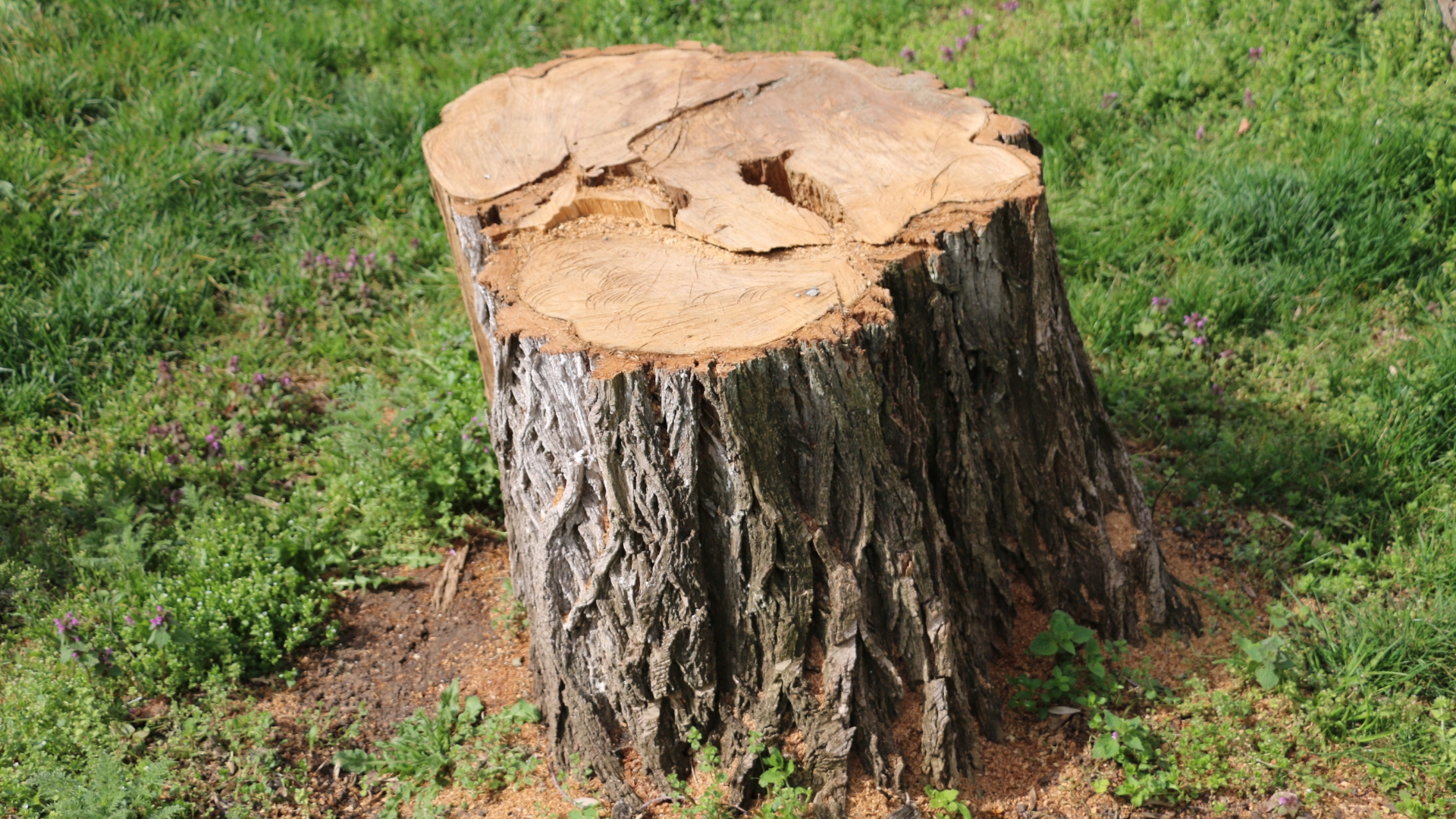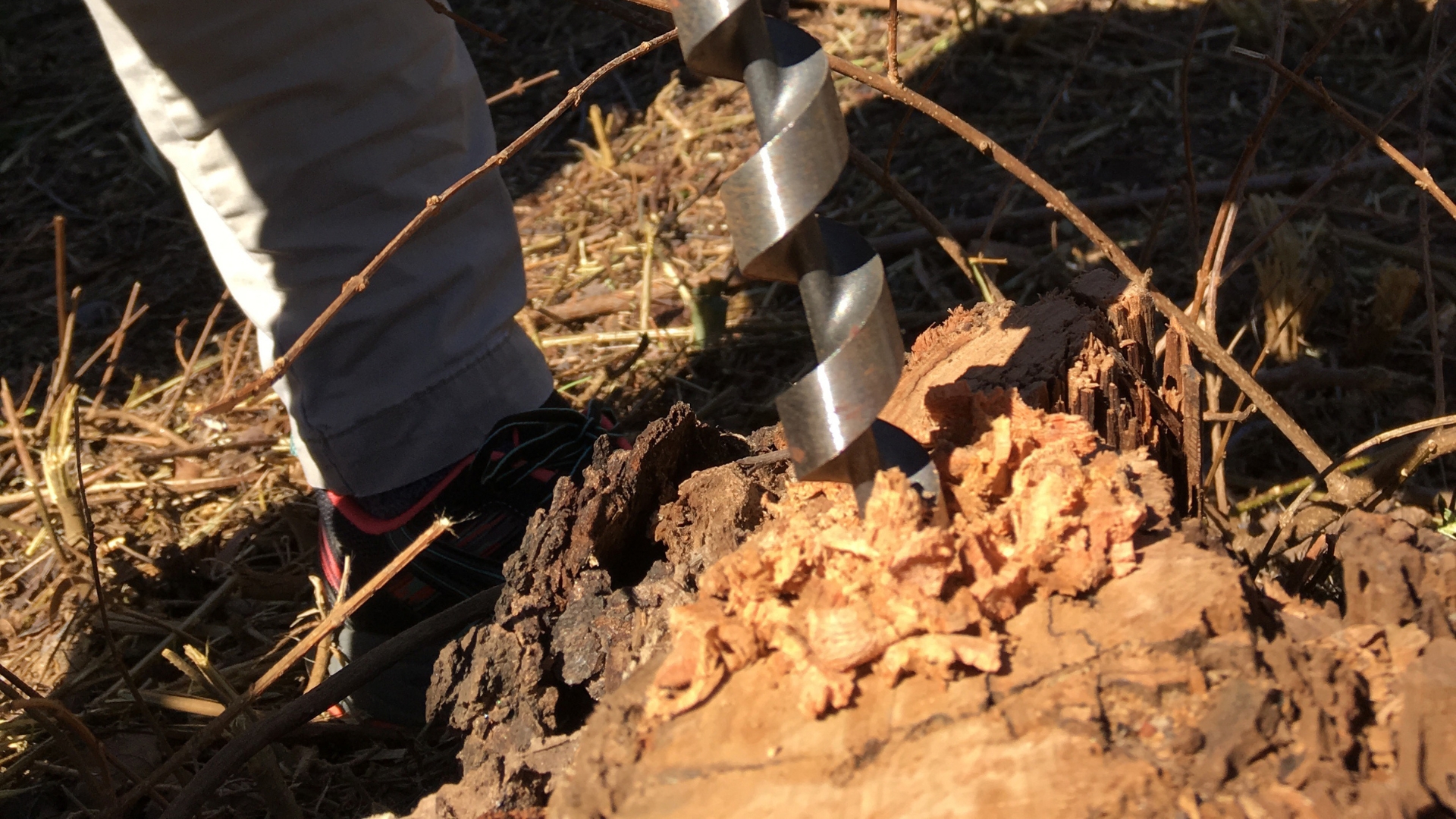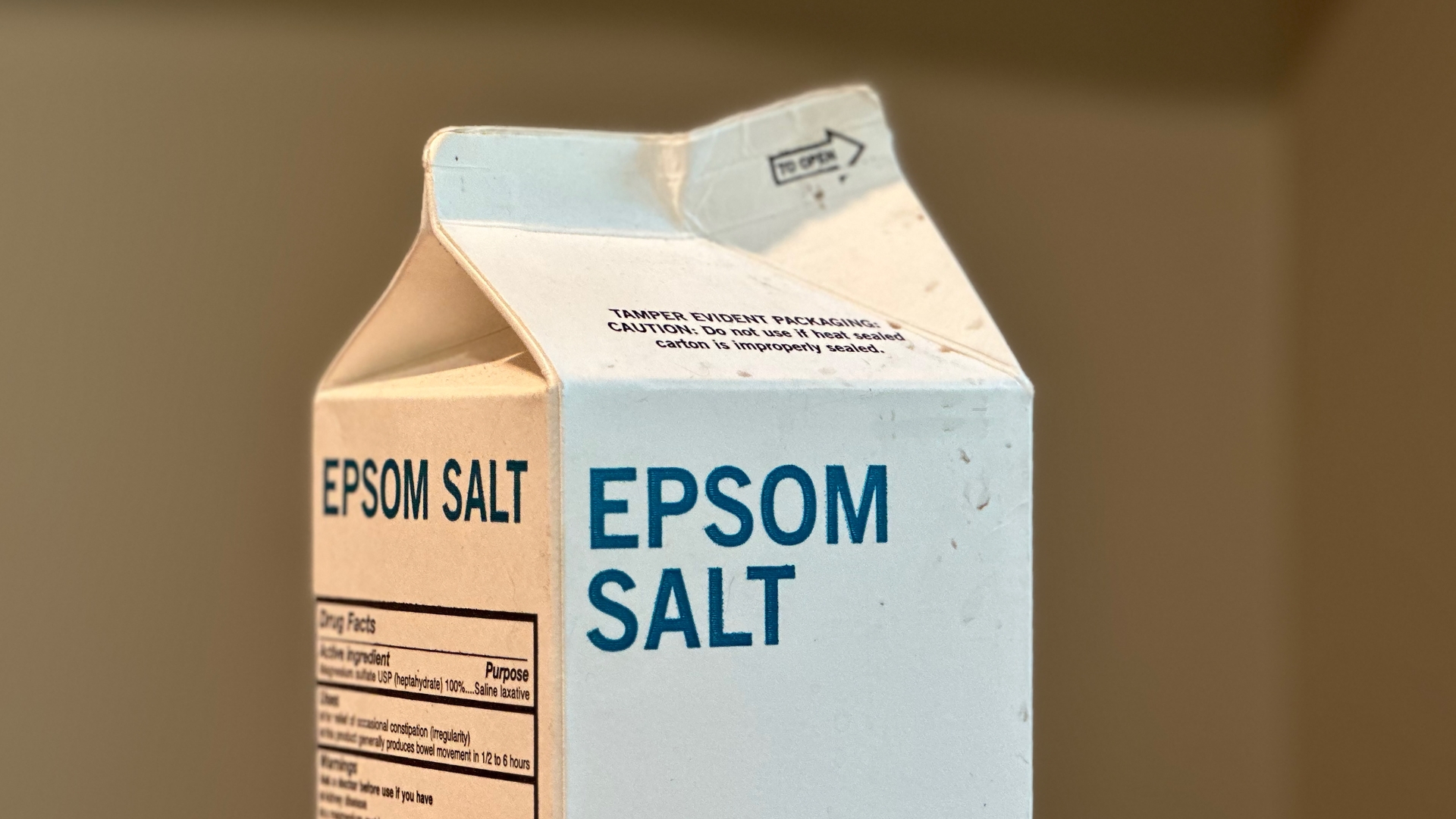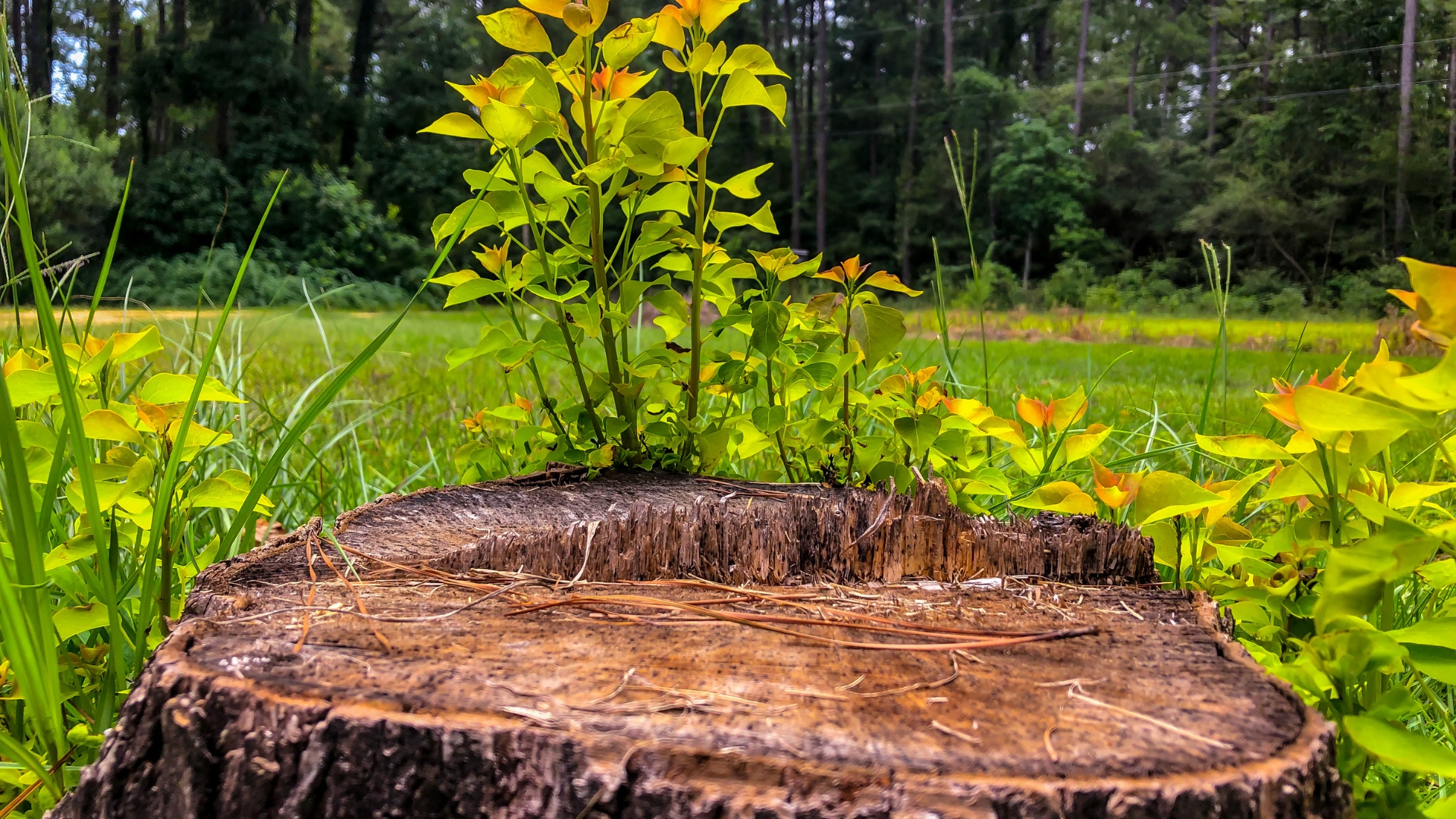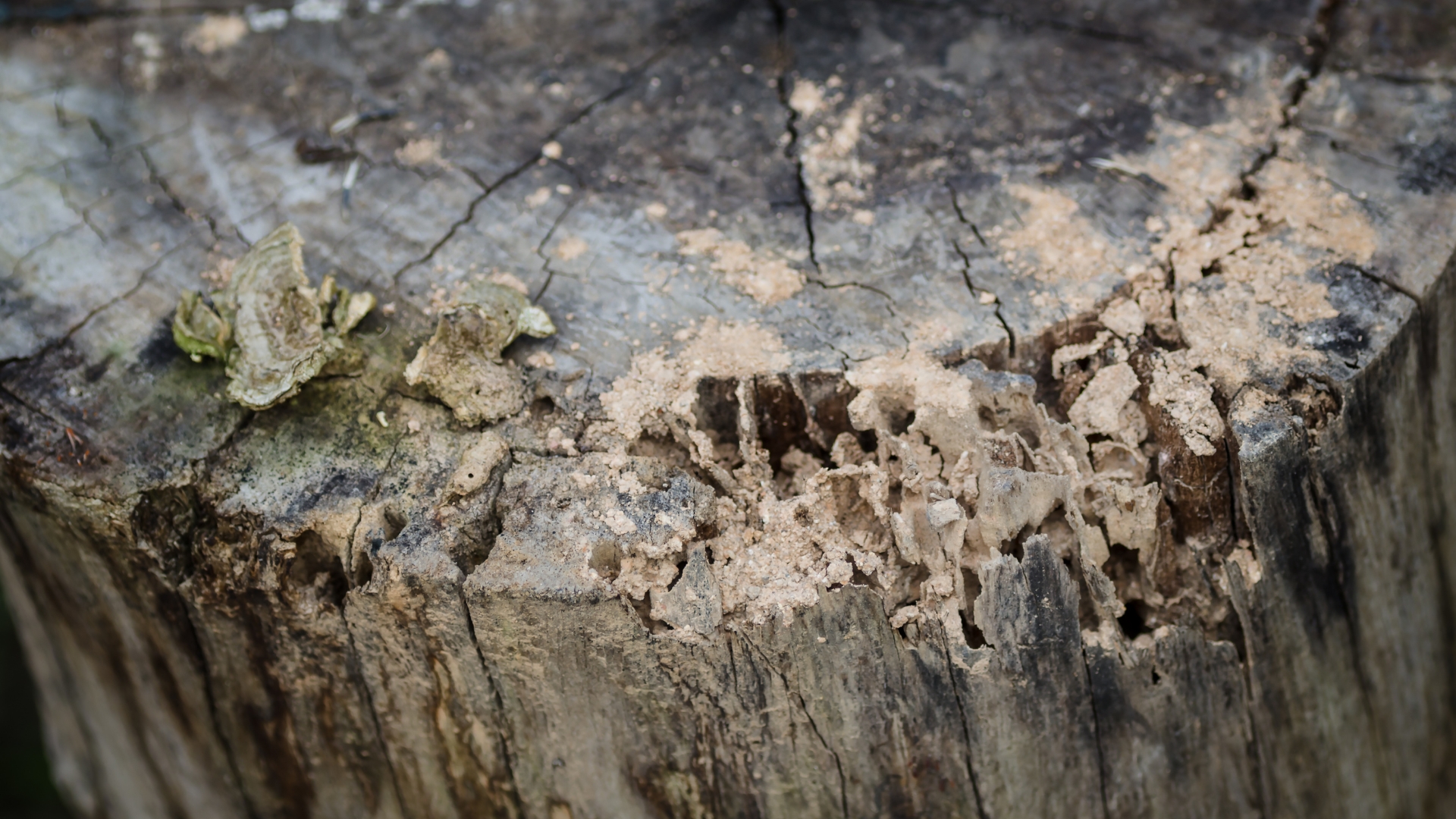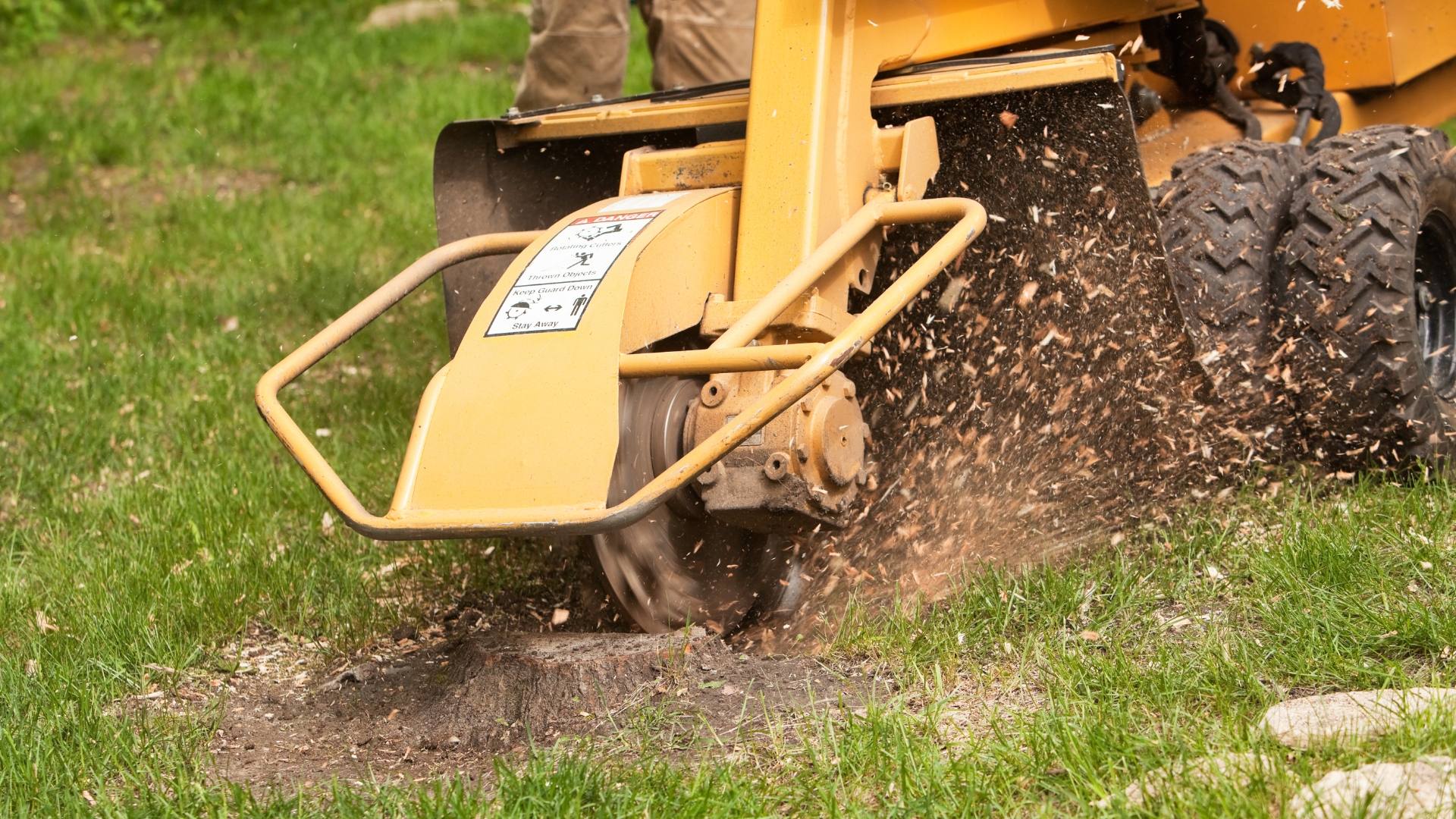Tree stumps have a way of overstaying their welcome—sitting there like an uninvited guest long after the tree is gone.
Some say Epsom salt is the secret to making them disappear without backbreaking labor or heavy machinery. But does this method really work, or is it just another gardening myth?
Before you pour a bag of salt on that stubborn stump, there are a few things you should know.
How To Use Epsom Salt To Remove Tree Stumps
First, let’s see how this method actually works. The idea is to speed up the natural decay process by dehydrating the stump from the inside out.
Start by drilling deep holes—about 8 to 10 inches—across the top of the stump, spacing them a couple of inches apart. Then, fill each hole with Epsom salt, letting it settle into the wood.
Next, add just enough water to dampen the salt, helping it absorb into the stump without washing it away. This salt mixture slowly draws moisture out of the wood, making it more brittle over time.
To keep the process going, cover the stump with a tarp or plastic sheet, trapping moisture and limiting exposure to rain, which could dilute the salt. For even better results, weigh it down with rocks or bricks to keep it in place.
You’ll need to reapply Epsom salt every few weeks, repeating the process until the stump softens and starts to break down.
What’s The Idea Behind Using Epsom Salt For This Purpose
Epsom salt, or magnesium sulfate, is often used in gardening to nourish plants, but in high concentrations, it does the exact opposite—it draws moisture out.
That’s the key to how it’s supposed to work on tree stumps. By absorbing water from the wood, Epsom salt is believed to accelerate the natural decomposition process, making the stump dry, brittle, and easier to break apart.
The idea is simple: without moisture, the stump can’t sustain itself, eventually crumbling away over time.
Unlike chopping or grinding, this method doesn’t involve heavy machinery or backbreaking labor. Instead, Epsom salt is meant to gradually weaken the stump from the inside out.
As it soaks into the wood through drilled holes, it’s thought to disrupt the stump’s ability to retain water, causing it to shrink, crack, and decay much faster than it would naturally.
By applying more salt over time and keeping the stump covered, the goal is to speed up rot and break the stump down without digging or burning.
But Is It Really A Good Option?
On paper, Epsom salt seems like the perfect stump remover—it’s inexpensive, easy to use, and avoids the hassle of heavy machinery.
But in reality, the results aren’t always as promising as they sound. While Epsom salt does draw moisture out of the wood, the process is painfully slow, often taking months or even years to make a noticeable difference.
Stubborn, dense stumps may resist decay for far longer than expected, leaving gardeners frustrated as they wait for visible progress.
Beyond the slow pace, there’s also the issue of effectiveness. Not all stumps respond the same way—hardwood species take much longer to break down, and if the application isn’t consistent, the stump may not decay evenly.
There’s also a risk of oversaturating the soil with salt, which can affect nearby plants.
Avoid These Mistakes If Using Epsom Salt For Tree Stumps
If you’re not concerned with the problems above and still want to try Epsom salt for stump removal, you should know about the common mistakes that can make the process even slower—or completely ineffective.
One of the biggest missteps is not drilling deep enough holes. Without proper entry points, the salt won’t penetrate the wood, leaving most of the stump unaffected.
Another mistake is using too little salt or failing to reapply it consistently. Epsom salt needs time to work, but it also needs reinforcement—forgetting to add more every few weeks can stall progress.
Water control is another critical factor—too much and the salt washes away, too little and the wood won’t absorb it properly. A light dampening is all that’s needed to activate the process. Another overlooked mistake is not covering the stump.
Without a tarp or plastic sheet, rain can dilute the salt, and exposure to air can keep the wood from drying out as quickly as possible. Lastly, some gardeners expect overnight results and give up too soon.
Even when done correctly, this method requires patience—so if you’re going to commit to it, be ready for the long haul.
Other Ways To Remove Tree Stumps
If waiting months for Epsom salt to break down a stump doesn’t sound appealing, there are other ways to get the job done—some faster, some requiring more effort, but all more effective.
One of the quickest methods is stump grinding, which uses a powerful machine to shred the stump into wood chips in a matter of minutes.
For those who prefer a hands-on approach, digging out the stump is another option, though it requires a lot of physical labor, especially for larger or deep-rooted trees.
For a more passive but effective approach, burning the stump is a common method, though it requires safety precautions and may not be allowed in all areas.
If chemicals aren’t a concern, stump removal products containing potassium nitrate can rapidly speed up decomposition, making the stump soft enough to break apart in weeks instead of years.
Even nature can do the job—accelerating decay with compost, mulch, or fungi can be a more environmentally friendly way to break down the wood.
If you were considering Epsom salt to get rid of that lingering stump, now you have the full picture—what works, what doesn’t, and what might take forever.
Whether you go the slow and steady route or opt for something quicker, at least now you won’t be stumped by your options!

